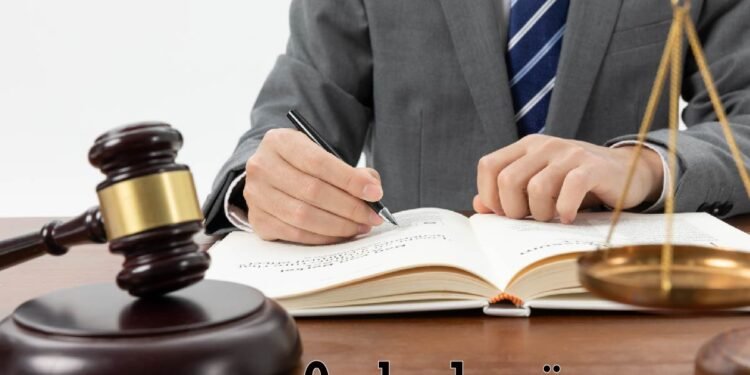Introduction
“In a world where trust is fragile, Ombudsmänner stand as silent defenders of fairness.” In 2025, societies face escalating complexity in governance, digital systems, and institutional power. When procedures become opaque and citizens feel unheard, the need for impartial oversight grows ever stronger. Ombudsmänner serve precisely in that fragile space, bridging the gap between individuals and large institutions. They trace their origins to early Scandinavian governance, and today their duties span government, education, healthcare, and private organizations. In the sections ahead, this article will chart their historical roots, define their role, explore the skills they require, examine challenges they face, present a global panorama, and forecast how their importance will evolve in the near future.
What Is an Ombudsmann
Definition and Meaning
The plural Ombudsmänner is the German variant of “Ombudsman,” sometimes also rendered in German as Ombudsperson or Ombudsmann/Ombudsfrau, but “Ombudsmänner” typically refers to more than one. An Ombudsmann is an independent, neutral mediator or investigator whose role is to protect individuals — citizens, employees, or consumers — from unfair treatment by organizations, institutions, or government bodies. They act as a check on power, stepping in when ordinary recourse may seem inaccessible or intimidating. Linguistically, the term derives from the Swedish “ombudsman,” which means “representative” or “agent,” reflecting a role that stands between the governed and the governing apparatus. The borrowed usage in German (Ombudsmann) and in many jurisdictions signals the same core idea: an advocate for fairness who is not aligned with any particular party.
Core Purpose and Principles
At their heart, Ombudsmänner rest on four guiding principles: independence, impartiality, confidentiality, and fairness. Independence means their office must remain free from undue influence by the entities they oversee. Impartiality means they do not take sides; they aim to listen to all perspectives. Confidentiality ensures that complainants can approach them without fear of retaliation. Fairness demands that rules, procedures, and outcomes maintain equity and transparency. Their dual function is key: they both resolve individual grievances and surface patterns of institutional dysfunction. Thus, Ombudsmänner not only respond case by case, but also contribute to systemic reform by identifying recurring problems and recommending improvements.
The Historical Evolution of Ombudsmänner
Origins in Sweden (1809)
The modern concept of an Ombuds began in Sweden in 1809, when the Swedish Parliament (Riksdag) created the Parliamentary Ombudsman to supervise government actions and ensure that public authorities adhered to laws and regulations. JO – Riksdagens Ombudsmän+2Wikipedia+2 As part of constitutional reform, the institution aimed to give citizens a recourse outside the courts to challenge administrative misconduct. Over time, the role evolved from an initially prosecutorial posture—where violations could lead to formal charges—to a more advisory and preventive office emphasizing critique, correction, and legal compliance. JO – Riksdagens Ombudsmän+2Brill+2
Global Adoption and German Integration
Following Scandinavia’s example, many countries adopted Ombudsman-like institutions. The model spread across Europe, commonwealth nations, and beyond. In German-speaking countries, the idea adapted as Ombudsmann / Ombudsmänner. The adoption signified a democratic commitment to oversight and accountability. In the European Union, the European Ombudsman office (established in 1995) provides oversight over EU institutions, expanding the role to supranational governance. ombudsman.europa.eu+2Brill+2 In Germany, ombudsmanship appears in private sectors, governmental agencies, and nonprofit structures, often under legal or regulatory mandate.
Expansion Beyond Government
In the 20th and 21st centuries, the reach of the Ombudsman institution extended far beyond public administration. Businesses began installing internal ombud offices to handle employee complaints. Universities set up ombudsmen for student disputes. Healthcare systems adopted patient ombud systems. Environmental, consumer protection, and digital rights bodies also began embedding the Ombudsman concept to oversee specialized domains. varuh-rs.si+3ombudsassociation.org+3LawBhoomi+3 As of recent data, over 100 countries have national Ombudsman institutions, and many more maintain regional or sectoral ones. varuh-rs.si
Core Functions and Responsibilities of Ombudsmänner
Investigating Complaints
One core task is to investigate complaints lodged by individuals who feel wronged. The typical process involves receipt of the complaint, review of the facts, gathering documents or testimony, analyzing whether rules or norms were violated, and issuing findings with recommendations for redress. Transparent handling is essential so parties trust the integrity of the process. Some systems allow the Ombudsman to subpoena documents or request testimony, though cooperation is not always mandatory. acus.gov+3usombudsman.org+3National Democratic Institute+3
Mediation and Conflict Resolution
Rather than purely adversarial investigations, many Ombudsmänner promote mediation and dialogue. They seek to resolve disputes amicably when possible, guiding the parties to options and helping foster understanding. In cases like workplace discrimination or consumer complaints, an ombuds office may help brainstorm solutions, offer coaching to complainants on how to represent their issue, or refer parties to formal mechanisms. MWI+3ombudsassociation.org+3Office of University Ombuds+3 This approach mitigates hostility and often leads to more sustainable outcomes.
Policy Improvement and Systemic Change
Another crucial responsibility lies in identifying systemic issues. By analyzing patterns in complaints, Ombudsmänner can recommend changes to policies, procedures, or training to prevent recurrence of issues. They may issue public reports, advise institutions, or propose legislative reforms. ombudsassociation.org+3National Democratic Institute+3LawBhoomi+3 Their consultative role helps institutions become more ethical, responsive, and fair over time.
Key Skills and Qualities of Effective Ombudsmänner
To perform this multifaceted role well, Ombudsmänner must possess deep empathy and active listening to truly understand all parties’ concerns. They must maintain strong ethical grounding and cultural sensitivity to treat diverse stakeholders fairly. Their analytical and critical thinking skills enable them to evaluate competing evidence and perspectives, balancing interests with clarity. Resilience under pressure is essential, since they often navigate institutional resistance or emotionally intense disputes, yet must remain composed. Neutral communication ensures they present findings without bias or inflammatory language. Finally, legal and procedural literacy help them interpret rules correctly and propose viable remedies.
Ombudsmänner Across Different Sectors
Government Ombudsmänner
Public sector Ombudsmänner handle complaints against administrative agencies, public services, law enforcement, and regulatory bodies. They review access to information requests, investigate maladministration, and ensure citizens receive fair treatment. For example, the Swedish Parliamentary Ombudsmen oversee compliance with laws by public authorities including courts and local agencies. Wikipedia+2Office of Justice Programs+2 They enhance transparency and accountability in government.
Education and University Ombudsmänner
Universities and educational institutions employ ombudsmänner to mediate disputes over grading, misconduct, harassment, or faculty-student conflicts. They help students and faculty navigate policies confidentially, mitigating adversarial escalation inside academic settings.
Corporate and Workplace Ombudsmänner
In businesses, internal Ombudsmänner address employee relations, whistleblowing, compliance concerns, and integrity issues. They act as confidential safe channels for staff to raise grievances without fear of retaliation. Their insights into complaint trends guide improvements in HR and organizational culture. ombudsassociation.org+2MWI+2
Healthcare Ombudsmänner
Health systems use patient ombudsmen to advocate for rights, address complaints about care quality, medical ethics, waiting times, or treatment errors. They mediate between patients, providers, and hospital administration to restore trust and propose improvements.
Environmental and Digital Ombudsmänner (New Frontier)
Emerging sectors now require oversight in ecosystem complaints, AI ethics, data privacy, and platform governance. Ombudsmänner in these domains investigate complaints about algorithm bias, surveillance, or environmental harm, marking how the role adapts to modern challenges.
Legal Framework and Authority
Legal Basis in Different Countries
Ombudsmänner generally derive authority from statutory acts or constitutional provisions which define their powers, jurisdiction, independence, and oversight. For instance, in Sweden the Ombudsman is constitutionally empowered to oversee public officials. JO – Riksdagens Ombudsmän+2Brill+2 In other jurisdictions, their offices are created by legislation or regulatory mandates. The legal foundation often includes safeguards for independence, staff protections, and reporting obligations.
Power and Limitations
Though Ombudsmänner can access documents, request testimony, and publish findings, their recommendations are frequently non‑binding. They hold moral authority and reputational weight rather than direct enforceability. ombudsman.europa.eu+3usombudsman.org+3National Democratic Institute+3 In rare designs, an Ombudsman can initiate disciplinary actions or legal referrals. Their authority is balanced by limits: they cannot replace courts, nor impose binding judgments, but they act as watchdogs backed by transparency, influence, and public legitimacy.
Challenges Faced by Modern Ombudsmänner
One major challenge is limited enforcement power—institutions may ignore recommendations. Resistance from entrenched bureaucracies or profit-driven firms can hamper cooperation. The surge in digitally mediated complaints—cyberbullying, data breaches, algorithmic bias—poses new complexities beyond traditional frameworks. Ombudsmänner must continually master technology, privacy law, and cultural competency to remain relevant. Balancing confidentiality with transparency is tricky—some cases require public disclosure, but revealing too much may violate privacy or compromise trust. Resource constraints, staffing, and political pressure further complicate their mandate.
Global Perspective — How Ombudsmänner Operate Worldwide
Europe
In Europe, especially in Scandinavian nations, Ombudsmänner enjoy strong institutional standing. The European Ombudsman supervises EU bodies and promotes good administration across member states. ombudsman.europa.eu+2Brill+2 Scandinavian models (Swedish, Finnish, Danish) often serve as benchmarks for independence and effectiveness.
North America
Canada and the USA apply ombuds roles in healthcare, universities, and government agencies. In the U.S., many federal and state agencies have internal ombuds offices to handle public grievances and guide procedural fairness. acus.gov+1 In Canada, ombudsperson offices operate in provinces and institutional settings.
Asia and Beyond
Countries such as India, Japan, New Zealand and others have been integrating ombudsperson schemes into their governance reforms. International organizations like the UN maintain Ombudsman and Mediation Services to handle internal staff disputes. United Nations Regions increasingly adopt Ombudsman institutions to bolster democratic accountability and human rights.
Ombudsmänner vs. Other Dispute Resolution Mechanisms
| Feature | Ombudsmänner | Mediators | Arbitrators | Courts |
|---|---|---|---|---|
| Role | Investigate & Recommend | Facilitate Dialogue | Decide Legally | Enforce Laws |
| Power | Advisory | Collaborative | Binding | Binding |
| Independence | High | Moderate | Variable | Institutional |
| Goal | Fairness & Systemic Change | Reach Mutual Agreement | Legal Resolution | Judicial Justice |
While mediators guide direct negotiation and arbitrators issue binding decisions, Ombudsmänner complement legal systems by uncovering grievances early, recommending reform, and preserving institutional trust without adversarial escalation.
The Future of Ombudsmänner in 2025 and Beyond
Digital Transformation and AI
In the coming years, AI‑powered complaint tracking, automated case triage, and algorithmic oversight roles will become common. The concept of a “Digital Ombudsman” may emerge for social media platforms, AI systems, and big tech regulation. Ombudsmänner will need fluency in algorithmic ethics, data law, and transparency protocols.
Expanding Into Sustainability and Social Justice
Ombudsmänner increasingly become key actors in climate justice, ESG governance, and human rights oversight. Corporations may embed them into CSR frameworks, enabling accountability over environmental harm or social impact.
Education and Training of Future Ombudsmänner
Professionalization will deepen: formal certifications, master’s degrees, and international networks (e.g. IOI, ENOHE) will prepare new generations. Collaboration among ombuds institutions worldwide will strengthen standards and allow cross‑jurisdictional learning.
Why Ombudsmänner Are Vital for Modern Society
In summarizing their significance: Ombudsmänner embody transparency, fairness, and accountability in contexts often dominated by power and complexity. Their role reduces the load on courts, prevents grievances from festering, and builds trust in institutions. The ripple effect is profound: fewer lawsuits, stronger public faith, more ethical culture across sectors. In essence, Ombudsmänner are the conscience of institutions, bridging authority with empathy, and maintaining equilibrium in the relationship between governed and governance.
(FAQs)
Q1: Are Ombudsmänner legally binding decision‑makers?
No. Their recommendations are typically advisory rather than enforceable. Their power lies in moral authority, transparency, and public pressure.
Q2: How does one become an Ombudsmann?
Many are lawyers, administrative law experts, or trained mediators. Independence, ethics, and neutrality are key credentials.
Q3: Can private firms employ Ombudsmänner?
Yes. Many corporations use internal ombuds offices to manage employee complaints, compliance issues, and integrity programs.
Q4: What is the difference between an ombudsman and a mediator?
A mediator facilitates negotiation between parties, while an ombudsman investigates complaints and offers recommendations based on findings.
Q5: Why can’t Ombudsmänner enforce their recommendations?
Because their mandate is usually grounded in oversight and persuasion, not judicial authority. Their influence is systemic rather than coercive.
More Article Links :


















Discussion about this post